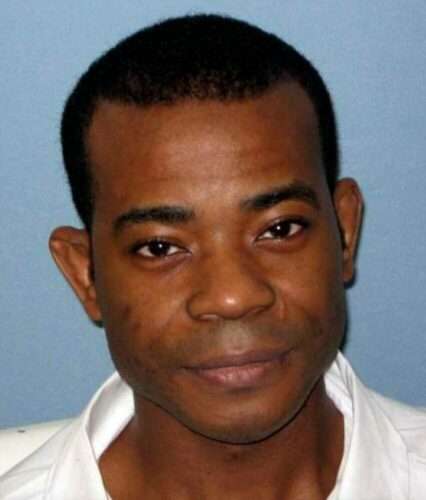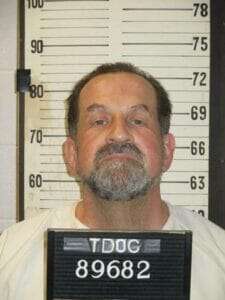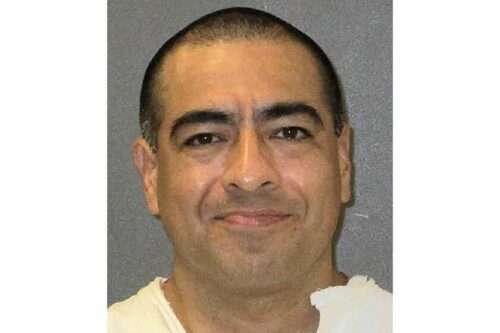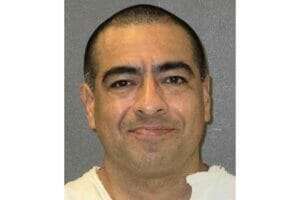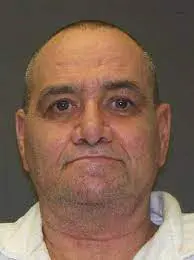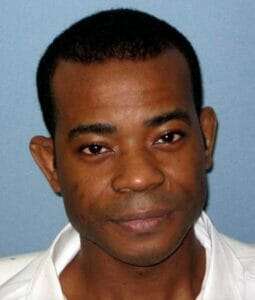
Nathaniel Woods was executed by the State of Alabama for the murders of three police officers in Birmingham. According to court documents Nathaniel Woods would shoot and kill the police officers however his codefendant would state that he was not guilty nor the trigger man for the brutal murders. However after decades of appeal Nathaniel Woods would be put to death by lethal injection on March 5, 2020.
Nathaniel Woods More News
Alabama inmate Nathaniel Woods was put to death Thursday night, three hours after his scheduled execution was initially delayed when the Supreme Court stepped in for a last-minute review of his case.
But the high court ultimately declined to intervene, and Alabama Gov. Kay Ivey also said she would not impede the execution, sealing Woods’ fate.
Woods, 43, who was convicted for his role in the fatal shootings of three Birmingham police officers in 2004, was pronounced dead at 9:01 p.m. by lethal injection, the Alabama Department of Corrections said. He had no last words but appeared to arrange his hands in a sign of his Islamic faith, according to The Associated Press.
In the days leading up to the execution, Woods’ family and prominent activists rallied on his behalf, collecting signatures in hopes of swaying Ivey to grant him clemency. Renewed questions surrounding his trial, accusations that his case was mishandled and scrutiny over how Alabama’s criminal laws treat black defendants raised concerns.
Even Woods’ co-defendant, Kerry Spencer, who has confessed to being the triggerman and denies Woods was complicit, implored for his execution to be stopped.
“Nathaniel Woods is 100% innocent,” Spencer, who remains on death row, wrote in an open letter. “I know that to be a fact because I’m the person that shot and killed all three of the officers that Nathaniel was subsequently charged and convicted of murdering. Nathaniel Woods doesn’t even deserve to be incarcerated, much less executed.”
But in a statement Thursday evening after the Supreme Court temporarily halted the execution, Ivey said she would not step in. “This is not a decision that I take lightly, but I firmly believe in the rule of law and that justice must be served,” she said.
The case drew attention from celebrities and activists, including Kim Kardashian West and Martin Luther King III, asking Ivey to intercede.
“In the case of Nathaniel Woods, the actions of the U.S. Supreme Court and the Governor of the State of Alabama are reprehensible, and have potentially contributed to an irreversible injustice,” King, the son of Martin Luther King Jr., said in a statement after the execution. “It makes a mockery of justice and constitutional guarantees to a fair trial.”
During Woods’ 2005 trial, prosecutors said he and his roommate, Spencer, were involved in the sale of crack cocaine from their Birmingham home.
Officers were sent to the home to serve a misdemeanor warrant, but prosecutors said Woods, who was 27 at the time, set up an ambush that allowed Spencer to shoot at them multiple times. Three officers — Carlos Owen, Harley Chisholm III and Charles Bennett — were killed, while a fourth officer at the scene was shot but survived.
Spencer admitted to shooting the officers, but said it was in self-defense because the officers were assaulting Woods, an assertion that the judge did not permit at trial. Two of the officers who were killed were later accused by another drug dealer at Woods’ home of being involved in a corrupt scheme that protected dealers in exchange for money. The Birmingham police declined to comment on the allegation.
The surviving officer, Michael Collins, said at the time that he believed Woods helped plan the shooting, but that he didn’t actually fire a weapon. According to him, Woods yelled, “I give up. I give up. Just don’t spray me with that mace,” before the shooting initiated.
Collins added that “I knew it wasn’t Nathaniel” who had fired at him.
While prosecutors didn’t dispute that Spencer shot at the officers, Woods was tagged as an accomplice, which in Alabama means that even if a person didn’t pull the trigger, they are still eligible for the death penalty.
In addition, Alabama remains the only state in the nation in which a jury doesn’t have to be unanimous to impose the death penalty and can still enact it with at least 10 jurors in favor.
While Spencer is on death row after he was convicted of murder, no execution date has been set.
Supporters of Woods have said he was the victim of incompetent counsel who failed to conduct an adequate investigation and missed key deadlines for appeals. Woods could have benefited from a plea deal of 20 to 25 years in prison, but supporters said he was wrongly informed by his own attorneys that he wouldn’t be convicted of capital murder because the state needed to prove he pulled the trigger.
“Mr. Woods did not accept this plea deal because he thought — with counsel’s encouragement — that he would be acquitted of these charges because the evidence would prove that he was not the shooter that day,” according to a petition objecting to his imprisonment.
In addition, supporters said, no evidence was produced that showed Woods plotted with Spencer and that it was Spencer who acted impulsively on his own when he opened fire.
Woods’ execution was the first in Alabama this year and the 67th in the state since capital punishment was reinstated in 1976.
“Under Alabama law, someone who helps kill a police officer is just as guilty as the person who directly commits the crime,” Ivey said. “Since 1983, Alabama has executed two individuals for being an accomplice to capital murder.”
Alabama Attorney General Steve Marshall said in a statement Wednesday that the concerted effort by supporters was a “last-minute movement … to ‘save’ cop-killer Nathaniel Woods from his just punishment.”
